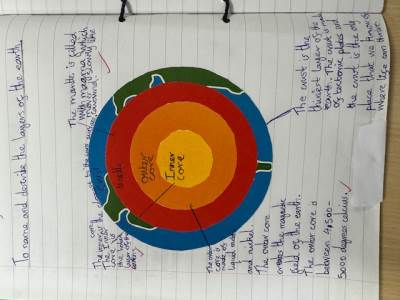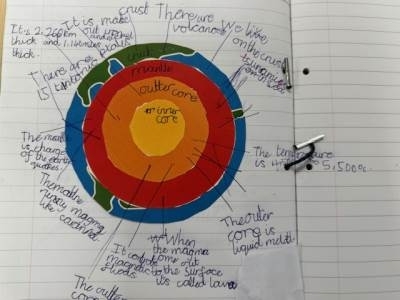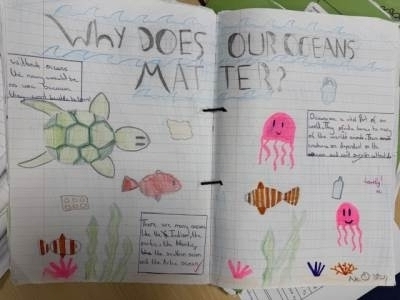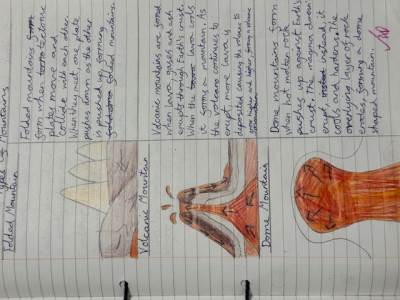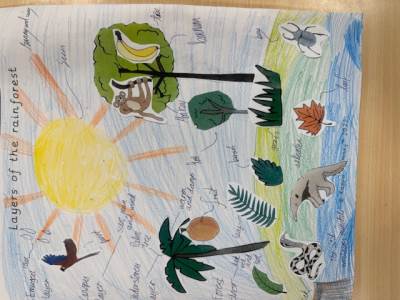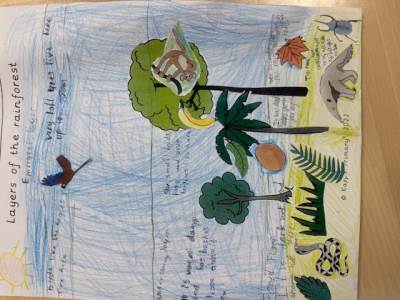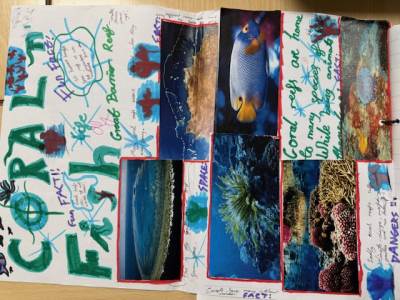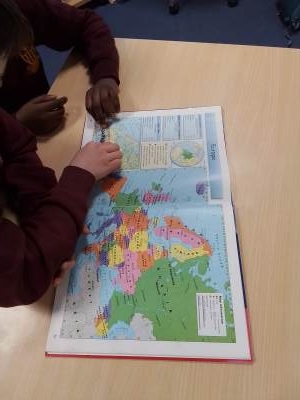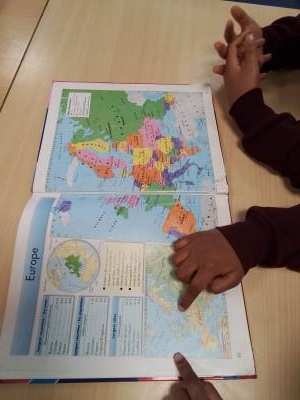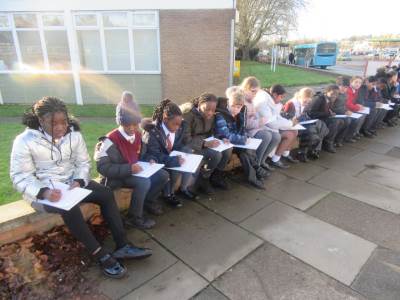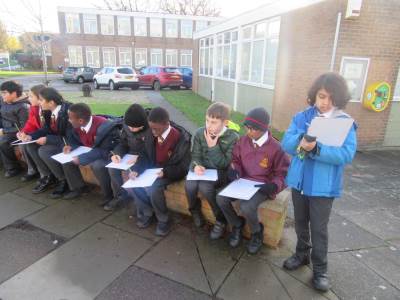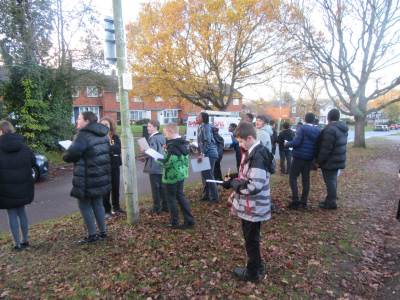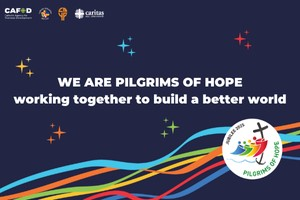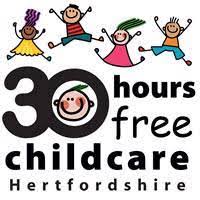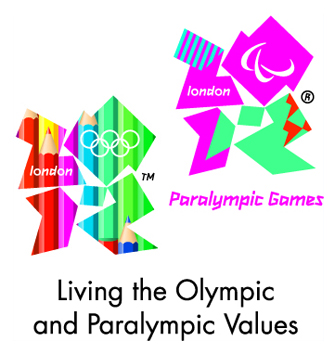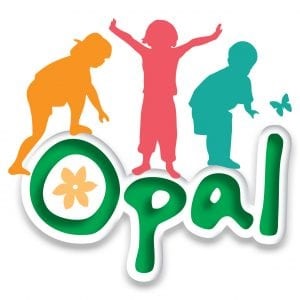Geography Work Photos
Statement of intent for geography curriculum at St Philip Howard
Intent
At St Philip Howard Catholic Primary School, we intend for the teaching of geography to fulfil the requirements of the National Curriculum; providing a broad, balanced and differentiated curriculum; ensuring the progressive development of geographical concepts, knowledge and skills. Geography is an investigative subject, which develops an understanding of concepts, knowledge and skills. We seek to inspire in children a curiosity and fascination about the world and its people which will remain with them for the rest of their lives. We want to promote the children’s interest and understanding of diverse places, people, resources and natural and human environments, together with a deep understanding of the Earth’s key physical and human processes. Through an engaging curriculum and meaningful experiences, we aim to nurture our future geographers and equip them with the knowledge they will need to become mindful citizens of the world.
We want our geography curriculum to help children to:
- See the world from different perspectives.
- Recognise the importance of outdoor learning and build a curiosity for learning.
- Increase their empathy.
- Observe and look closer at the world around them.
- See connections in the world.
Our Catholic Ethos
At St Philip Howard, 'our cross-curriculum and multi key stage approach helps us to embed the principles of Catholic Social Teaching. It helps us to contextualise the National Curriculum with the beliefs and values of the gospel and the Catholic tradition, aspiring to reach the highest possible levels of learning.’ Our intention is to help pupils care for the world around them, develop curiosity about what they see and experience, and be able to use geography to understand how human activity impacts on the planet and how we can carry out our duty of care for God’s creation.
Implementation
What do we teach? What does this look like?
We deliver our geography curriculum through projects and use 'Kapow' to support our planning and teacher subject knowledge. These projects are built around essential knowledge, understanding and the key skills of geography. These are broken into year group expectations and show clear continuity and progress. In accordance with the National Curriculum’s expectations, the aims of teaching geography in our school are:
- To inspire pupils’ curiosity to discover more about the world.
- To enable children to know about the location of the world’s continents, countries, cities, seas and oceans.
- To develop in children the skills of interpreting a range of sources of geographical information, including maps, diagrams, globes, aerial photographs and Geographical Information Systems (GIS).
- To help children understand how the human and physical features of a place shapes it location and can change over time.
- To provide opportunities to collect, analyse and communicate data gathered through experiences of fieldwork that deepen their understanding of geographical processes.
Children at St Philip Howard, enjoy first hand opportunities to explore and investigate our beautiful, rich and diverse geographical area. Teachers are encouraged to consider opportunities to use the school grounds and the local area for fieldwork to enable children to base learning on first hand experiences and develop a real sense of who they are, their heritage and what makes our local area unique and special.
What geography looks like in our school:
EYFS
We teach geography in the Foundation Stage as an integral part of the topic work covered during the year which runs alongside Kapow. We relate the children’s work to the objectives set out in the Development Matters document and the Early Learning Goals that underpin the curriculum planning.
The most relevant statements for geography are taken from the Mathematics and Understanding the World (UW).
Pupils have opportunities to:
- To know about similarities and differences between themselves and others, and among families, communities and traditions.
- To know about similarities and differences in relation to places, objects, materials and living things.
- They talk about the features of their own immediate environment and how environments might vary from one another.
Key Stage 1
Pupils develop knowledge about the world, the United Kingdom and their locality. They are taught basic subject-specific vocabulary relating to human and physical geography and begin to use geographical skills, including first-hand observation, to enhance their locational awareness.
Key Stage 2
Pupils extend their knowledge and understanding beyond our local area to include the United Kingdom and Europe, North and South America as well as the Polar Regions. This includes the location and characteristics of a range of the world’s most significant human and physical features. They develop their use of geographical knowledge, understanding and skills to enhance their locational and place knowledge.
Impact
What will this look like? By the time the children leave our school they will:
The children at St Philip Howard want to explore the world in which they live! They have both the geographical knowledge and the skills that they can apply to other areas of their learning. They will gain a deep understanding of the world in which we live, their impact on our world and how they can make a difference to our planet. Children’s knowledge and skills will develop progressively as they move through the school, not only to enable them to meet the requirements of the National Curriculum but to prepare them to become competent geographers in secondary education. Looking in their geography books; their knowledge and understanding is clear and progressive year on year. Teachers mainly use formative assessment tools with elements of summative assessment to ensure their judgement of each child in geography is accurate. The impact of our geography curriculum can be seen in our children’s books, images of children’s practical learning and through pupil voice about their learning.
Each term, the pupils study a different area of the Geography curriculum, and over the course of a year, all Geographical skills required are practiced.
| Year Group | Autumn Term | Spring Term | Summer Term |
| Nursery | Exploring our local community. | Know that there are other countries in the world. | Talk about similarities and differences of different countries. |
| Reception | Exploring Maps. | Outdoor Adventures | Around the world. |
| Year 1 | What is it like here? | What is the weather like in the UK? | What is it like to live in Shanghai? |
| Year 2 | Would you prefer to live in a hot or a cold place? | Why is our world wonderful? | What is it like to live by the coast? |
| Year 3 | Why do people live near volcanoes? | Who lives in Antarctica? | Are all settlements the same? |
| Year 4 | Why are rainforest important to us? | Where does out food come from? | What are rivers and how are they used? |
| Year 5 | What is life like in the Alps? | Why do our oceans matter? | Would you like to live in the desert? |
| Year 6 | Why does population change? | Where does out energy come from? |
Can I carry out an independent fieldwork enquiry? |









